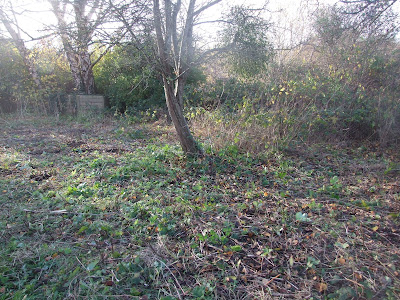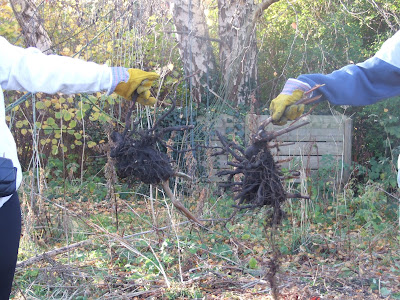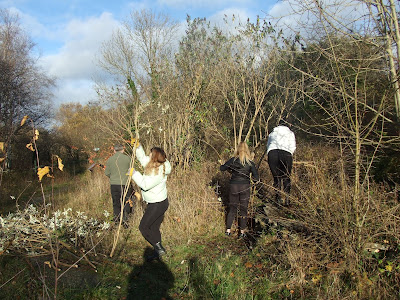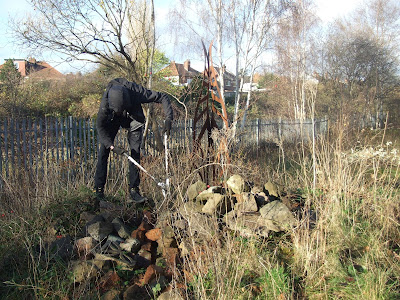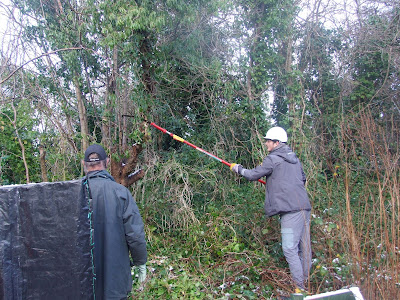Thanks again to Roy Lowry who has sent us another great report, illustrated by his photographs. This time he explains his recording process using photographs to identify the invertebrates he finds at New Ferry Butterfly Park.
Anybody involved in the management of a nature reserve needs
to know the species of insect that live there and how this list changes from
season to season and from year to year. During 2022 I aimed to provide this
information for New Ferry Butterfly Park through regular photo-recording
surveys. These involve walking around the reserve photographing every insect I
see. Date and time of each photograph are automatically recorded by the camera
together with high-accuracy positions (if needed) from a Bluetooth-connected
phone. Back home the insects are identified, and the observations recorded on either
iRecord or iNaturalist.
Of course, the hardest part of this is identification of the
observation subjects from the photographs, which need to show the critical
identification features of the specimen at high magnification and in perfect
focus. Frequently, this requires several photographic viewpoints. The two
problems here are knowing the viewpoints required and persuading the subject
insect to allow those viewpoints to be accessed. Even something as
straightforward as a face shot can require a lot of patience. Sometimes, things
come good such in Photo 1 below. Here, a female common flower fly (Syrphus ribesii)
is displaying her ’hairy armpits’, well-separated eyes and all-yellow hind
femur in a single shot facilitating confident identification to species level.
 |
Photo 1: Female common flower fly (Syrphus ribesii)
|
However, quite often the result is like Photo 2 where a male Syrphus
manages to hide his hind femur under his wing and the photo quality is
insufficient to show whether the eyes are hairy. Consequently, identification
is only possible to genus level.
 |
| Photo 2: Male Syrphus sp. |
This surveying method has both advantages and disadvantages.
The main disadvantages are selective sampling and the identification
uncertainties. Sampling is selective because the only invertebrates recorded
are those that I can photograph. Coverage is good for flying insects, especially
those that visit flowers but most crawling insects such as beetles and bugs
spend most of their time out of sight. The problem can be overcome by sweeping
nets through the vegetation or by beating bushes with sticks whilst holding a
large net underneath. The catch is transferred into plastic pots where they can
be identified using a hand lens or photographed. I have tried photographing
insects in pots, but the results have been poor quality as the subjects rarely
sit still and the pots aren’t perfectly clear. I have thought of building a
field studio – a box with a glass front holding insect perches – so that
specimens can be released from the pots and better-quality photos obtained
using a macro flash setup. I may try a few experiments during 2023.
The identification uncertainty can be reduced by catching
specimens, killing them, mounting them, and examining them under a microscope. Facilities
for examination, including an extensive collection of identified specimens for
comparison, are provided by the Tanyptera project at Liverpool World Museum.
For even greater identification certainty samples from specimens may be used
for DNA barcoding, but this is expensive and would only be used in
circumstances such as confirmation of a rare find. As a photographer rather
than a zoologist I prefer not to harm my subjects.
The advantages of photo-recording are its speed, the resulting
by-product, and the lack of damage caused to both subjects and their
environment. Speed means that the Butterfly Park can be surveyed in about an
hour, making weekly or more frequent surveys possible. Such frequency catches both
seasonal changes in the fauna and transient species passing through the reserve.
The survey by-product is an ever-increasing photo-library of the Butterfly Park
and its invertebrates that has been organised into OneDrive folders which are available
to those who can make use of them for research or illustration. Over 600 images
of varying quality were added during 2022. Photo 3 was one of my favourites showing
a dingy skipper butterfly (Erynnis tages) in a visually interesting setting.
 |
| Photo 3: Dingy skipper butterfly (Erynnis tages) |
I plan to continue the surveys through 2023 and will try to
take a fixed set of wide-angle views of the Butterfly Park at monthly intervals,
as I do on Chester Zoo Nature Reserve, to show how it looks through the seasons.
All photographs
were taken by me in New Ferry Butterfly Park during 2022 and are published
under cc-by licence.
Roy Lowry

